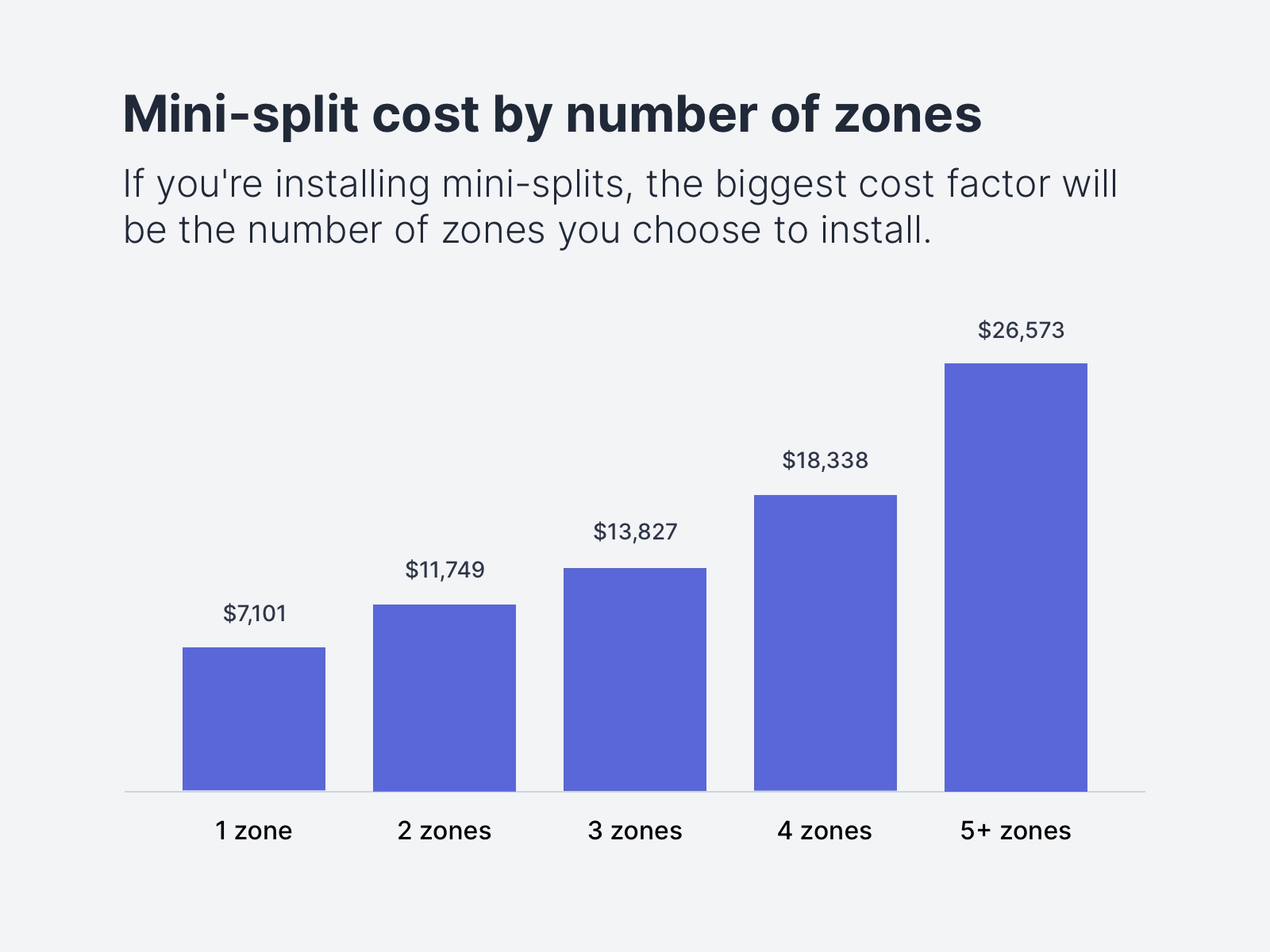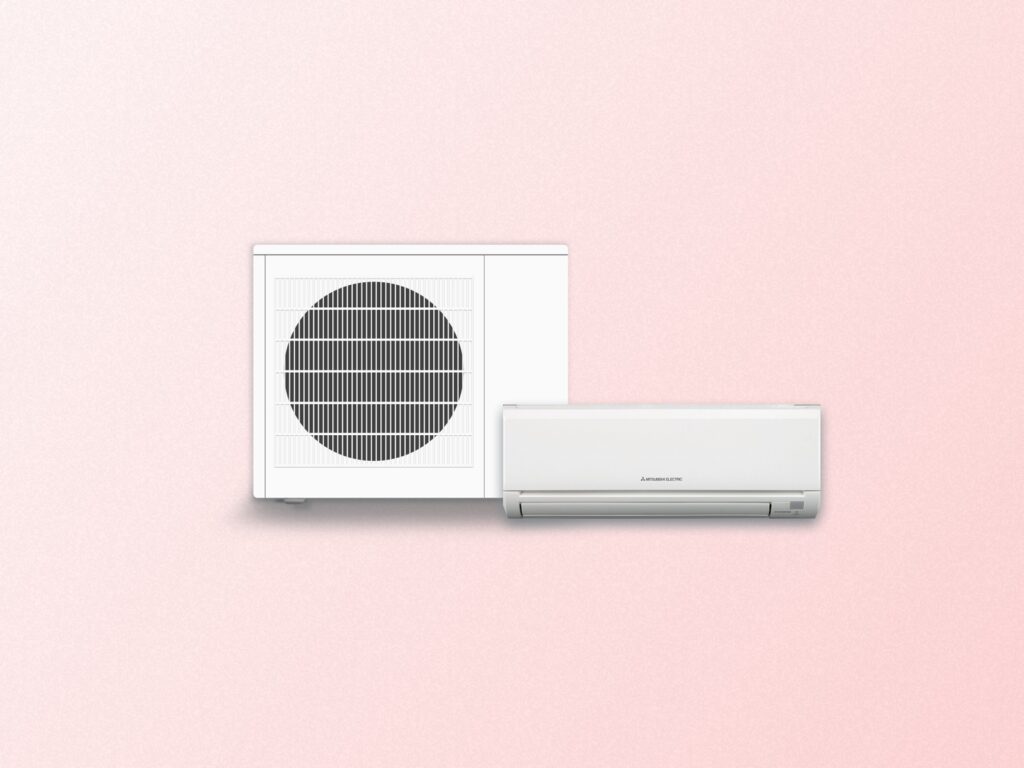How and why we researched mini-split costs
How much a new ductless mini-split system will cost you depends on a lot of factors. Some you might know, or could guess, like how big your home is, or where you live. But some things, like unexpected electrical upgrades or rebates, are trickier.
This complexity can be frustrating. That’s why we embarked on a months-long effort to get real numbers on how much mini-splits and other types of heat pumps cost.
We surveyed 125 homeowners across the United States and Canada, reviewed previous research, spoke with experienced installers, and analyzed publicly available data from states like Massachusetts and California. Here’s what we learned:
Average cost of a mini-split
According to our survey and analysis of other data, homeowners can expect a mini-split installation to cost between $7,000 and $25,000, depending on the number of zones.
Based on this research, the average cost of a mini-split is about $12,000, after rebates.
What impacts mini-split costs most?
The biggest mini-split installation cost factor is the number of zones you choose to install. In other words, how many indoor units, or “heads”, do you want?
Here’s how much the average homeowner paid based on the number of mini-split zones:
- One zone: $7,101
- Two zones: $11,749
- Three zones: $13,827
- Four zones: $18,338
- Five or more zones: $26,573

The reason for these cost differences is simple: more zones require more labor, equipment, and parts. The outdoor unit needed for heating and cooling gets pricier as you add indoor units, especially once you move past the single-zone models. And each mini-split unit inside your house costs about $1,000-$2,000.
The outdoor compressor and indoor heads are “the major cost in a mini-split system,” said David Richardson, a heat pump installer and co-founder of Elephant Energy.
But there are certainly other costs, too. If your home has 3-5 zones, some of those zones will be a significant distance from the outdoor unit. Running the necessary refrigerant, electricity, and drainage lines to those indoor units requires labor and materials. And it could introduce complications with walls, ceilings, wiring, or other work that might need a sub-contractor, Richardson said.
These kinds of complications could add up to $5,000 in extra labor costs on a tricky job, Richardson said.
Here are the other things to consider when considering a mini-split system, whether for a new or existing home.
Other factors that can affect mini-split costs
Climate
Modern heat pumps can do amazing work in cold climates, but that innovation comes at a cost. If your winters regularly take you into sub-freezing temperatures, or even into negative temperatures, you need a suitable outdoor unit. And those cost more money.
If your home needed a 3-ton (36,000 BTU) heat pump, and your winter temperatures regularly dipped below 5 degrees Fahrenheit, you might want one of Mitsubishi’s Hyper Heating (H2i) heat pumps. A 3-ton Hyper Heating unit costs about $6,400—and that’s before any parts or labor.
But if your region is almost always above 5F, you could save around $1,200 buying a 3-ton Daikin mini-split, instead. And you can likely find even more affordable models, if your winters stay above 10 or 20F.
So the colder your winters, the more you can expect to pay for a heat pump. In fact, according to our survey, homeowners in the Northeast pay about 15% more on average for heat pumps than homeowners in the South.
Rebates and incentives
If you live in a state that encourages efficient, less carbon-intense heating and cooling systems, there’s a chance installing a mini-split heat pump means rebates.
The average homeowner in our survey received $2,000 in rebates for their mini-split installation. Homeowners that installed ductless mini-splits in Massachusetts in recent years received an average of about $4,000 each in rebates. In some places, these rebates alone could make up for the higher upfront cost over traditional A/C and furnace systems.
Heat pump installer David Richardson advises homeowners to talk with their installer, and check with their state and local governments and utilities, to have as much knowledge as possible about exactly what qualifies for a rebate. A 2.5-ton outdoor compressor purchase may trigger a partial rebate, a 3-ton unit from the same line a full rebate, and then a 3.5-ton unit no rebate at all, Richardson noted. A small design change could mean a big shift in project costs.
Electrical upgrades
Removing fossil fuels and electrifying your home makes good environmental sense, and often saves you big money over time. Before you can start, however, your home needs the necessary power.
Whether your home will require an upgraded electrical panel, or need new circuits and wires, depends on a number of factors. Key among them is how many large items in your home—hot water heaters, hot tubs, EV chargers—could need power at once, along with your outdoor unit and each indoor unit.
An upgrade is not an inevitability, however. Among the 48 ductless Massachusetts heat pump installations we analyzed, only eight (17%) required an electrical panel upgrade. And those systems mostly replaced gas furnaces and water boilers, which previously drew little to no electrical power. Richardson said that the vast majority of heat pump installations he’s worked on could be made to fit a home with a 100-amp service panel.
Still, there are edge cases and exceptions. You may need to run a 240-volt line to the outdoor compressor. And as with indoor units, complicated routes through tricky homes can add costs.
How to reduce the cost of a mini-split installation
Consider hybrid heating options
One way to reduce the cost of a mini-split installation, especially in cold climates, is to install a “hybrid” or “dual-fuel” system. Let’s take a look at how that works.
Earlier we mentioned that more mini-split heads results in a higher cost. In a hybrid configuration, you install just one or two heads and use another system, like a wood stove or your existing gas furnace, as backup on the coldest days.
This kind of configuration can save hundreds of dollars a year on general heating costs, but keep the upfront installation costs low with a smaller equipment bill.
That kind of hunkered-down, hard-winter scenario won’t work for everyone, but it’s an example of how mini-splits aren’t an all-or-nothing proposition. If a whole-home mini-split installation is too expensive, given the costs mentioned in this guide, a partial install can still save you money–and garner rebates.
Improve your home’s insulation and envelope
Another way to reduce the cost of your mini-split installation is to first invest in insulation and air sealing so you can get by with a smaller outdoor unit and less zones.
The best way to do this is to get an energy audit of your home or find a home performance contractor in your area. Through tools like a blower door test, thermal imaging, and climate and thermostat data, they can tell you how much heating your home really needs—a “Manual J Load Calculation.” You may be able to lower that number, and need fewer indoor units or a smaller outdoor unit.
Read more about how Carbon Switch founder Michael Thomas discovered his home’s true heating and cooling needs in our heat pump sizing guide.
